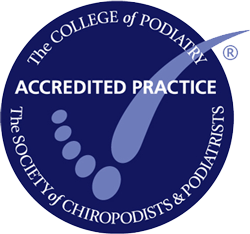Why podiatrists recommend Vionic footwear is because they have been designed by podiatrists. Vionics have been ergonomically designed to incorporate functional and supportive orthotic insoles without compromising on comfort. They are a prescriptive shoe with no need for a prescription with bags of style.
Problems with orthotics and standard shoes
Often inserting an orthotic into a standard shoe leads to an accommodation fit issue. The foot is squashed. The instep is pushed up and toes are subjected to increased pressure. This can result in painful corns and callous. Patient compliance can be poor for some individuals issued with orthotics. Patients discard their orthotics very quickly without giving them a chance. They return to wearing inappropriate footwear. This consequently means their presenting foot related lower limb problem is not satisfactorily treated.
Fashion v Comfort
The problem for podiatrists is many individuals want to wear an appealing shoe. When advised on what type of shoe they should wear to improve foot function and reduce pain they baulk. They don’t want an orthopaedic shoe which says; “I have a problem” or sacrifice on style. A kind of impasse can occur between patient and podiatrist. A compromise needs to be reached. There is then the issue; “I have many shoes so can I just put something in them?”
On the market there are various types of ‘off the shelf’ orthotic insoles. Thin, flexible, rigid, slim-line and 3/4 length varieties to fit all footwear, but one size/ type does not fit all. Common issues: orthotics don’t sit correctly, lift heel or foot out the shoe. High insteps and higher than normal heel height type feet pose a real problem. There are then the seasonal issues to contend with. Sandals don’t generally work with orthotics, and in winter footwear they can rattle around or don’t just don’t fit. All very exasperating.
Vionic to the Rescue- A Problem Solver
All Vionic footwear have concealed biomechanical support and control. This why podiatrists recommend Vionic footwear. They offer a range of sandals with inbuilt orthaheel foot-beds. These cradle the arches and support the foot. Problem solved. Then for Autumn/Winter, all footwear have concealed un-intrusive vio-motion orthotic insoles. Weightbearing pressures are more evenly distributed and potential unwanted biomechanical stresses are mitigated. Vionics are also cushioning for sensitive foot types and contoured for heels. For ladies wanting a heeled boot Vionic have developed an elevated orthotic. Podiatrists recommended a heel to help resolve heel pain.
What are Orthotic Insoles?
Orthotic insoles are angled to realign the foot into a more normal position. An orthotic insole will reduce abnormal biomechanical stresses throughout the foot and up the lower limb. If a foot is rolling in it can result in internal rotation up the leg. If this is not controlled within normal limits unwanted wear and tear can develop. Individuals can develop painful ankle, knee, hip and lower back problems. A high arched foot can also lead to painful conditions if foot is not supported. Classic foot conditions caused by low or high arches are plantar fasciitis and heel pain.
Overall Verdict: Why Podiatrists Recommend Vionic Insoles
Vionic foot wear with it’s concealed orthotic support is an ideal shoe choice to resolve a multitude of problems. Hence, therefore this is why podiatrists recommend Vionic footwear. Prices at first can appear steep, but the customer is not having to pay out twice for a suitable shoe then an orthotic. Vionics are a functional shoe in the same way the Joya is. Remember these are not standard shoes. These are shoes to resolve biomechanical issues.
Try on before buying
It is important to try Vionic footwear on first before buying. A podiatrist can help to improve the fit. Podiatrists can work with Vionics to tailor make the right prescription for a patient’s needs. The removable orthotic insoles can be adapted to increase orthotic correction. Individuals with particular problems should not double-guess their issues and order online. Consult a podiatrist first. Have a biomechanical assessment. A skilled podiatrist can identify what will correct a problem.











